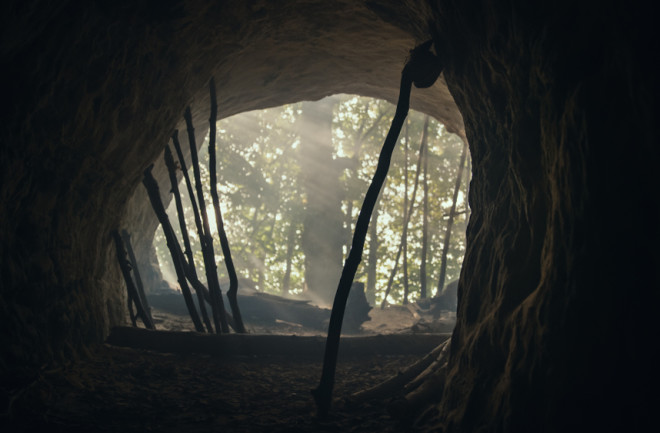The relationship between humans and Neanderthals has consistently been shrouded in mystery, but a collection of new studies has now solved a major piece of the puzzle. Based on analysis of ancient bone fragments, researchers shed light on early humans’ presence in northern Europe alongside Neanderthals, answering questions that have long engulfed the science community.
Researchers set their sights on Ilsenhöhle, an archaeological site at the base of a castle in Ranis, Germany. An international team re-excavated the site from 2016 to 2022 to locate deposits from prior excavations that took place between 1932 and 1938. Evidence of stone tools and human bone fragments drove the effort to explain the appearance of early humans in Northern Europe. The results were discussed in a trio of papers recently published in Nature and Nature Ecology and Evolution.
Living Among Neanderthals
Thousands of bone fragments found during the excavation were analyzed through paleoproteomics, the study of ancient proteins. This process confirmed that the bones belonged to humans who occupied the site. Further genetic analysis of the bones, including comparison with DNA sequences of human remains at other paleolithic sites across Europe, allowed researchers to conceive a map of early humans in Europe.
All but one of the 13 human skeletal remains recovered from both the old and new excavations turned out to be similar to one another; several fragments shared the same mitochondrial DNA (mtDNA) sequences, usually inherited from the mother alone. The similar remains also appeared to be connected to mtDNA from a 43,000-year-old skull of a woman found in a cave in the Czech Republic.
“That raises some questions: Was this a single population? What could be the relationship here?” said Elena Zavala, a research fellow at University of California Berkeley, in a press release. “But with mitochondrial DNA, that’s only one side of the history. It’s only the maternal side. We would need to have nuclear DNA to be able to start looking into this.”
Read More: Modern Humans and Neanderthals May Have Cohabitated For 2,900 Years
Creating Stone Tools
The analysis of human remains allowed researchers to identify the origins of stone blades — called leaf points — found at the Ranis site during previous excavations. The blades, similar to other stone tools found at several sites in Europe, were grouped into the Lincombian-Ranisian-Jerzmanowician culture upon their initial excavation.
Initially, most assumptions pointed to Neanderthals as the creators of these tools, seeing as they resided in Europe long before humans. However, the new discovery asserts that the early humans who migrated to Europe over 45,000 years ago and stayed at the Ranis site actually created the tools. This proves that humans reached northwestern Europe before Neanderthals disappeared in southwestern Europe. The two hominid groups likely encountered each other in Europe and interbred at times.
Read More: What Types of Tools Did Neanderthals Use and Develop?
Enduring a Cold Climate
Analysis of sediment at the Ranis site revealed DNA from several mammals, giving researchers a clear picture of the environment surrounding the cave that humans dwelled in millennia ago. The team found reindeer, cave bear, wooly rhinoceros and horse bones, meaning the cold environment was like the steppe tundras found in modern Siberia and northern Scandinavia. The Ranis cave was mostly used by hibernating carnivores, they add, while mobile human groups used it as shelter periodically.
“This shows that even these earlier groups of Homo sapiens dispersing across Eurasia already had some capacity to adapt to such harsh climatic conditions,” said Sarah Pederzani, a postdoctoral fellow at the University of La Laguna in Spain, in a press release. “Until recently, it was thought that resilience to cold-climate conditions did not appear until several thousand years later, so this is a fascinating and surprising result."
Radiocarbon dating of human and animal bones gave researchers a more exact estimate regarding human occupation of the Ranis site. They concluded that early humans had occupied the site as early as 47,500 years ago, creating a new narrative about their arrival in northern Europe while Neanderthals were already scattered across the continent.
Read More: When Did Homo Sapiens First Appear?
Article Sources
Our writers at Discovermagazine.com use peer-reviewed studies and high quality sources for our articles, and our editors review for accuracy, and trustworthiness. Review the sources used below for this article:
Max Planck Institute for Evolutionary Anthropology. Late Neandertals and Early Modern Humans in Western Europe.
Nature. Homo sapiens reached the higher latitudes of Europe by 45,000 years ago.
Nature ecology & evolution. Multiple episodes of interbreeding between Neanderthals and modern humans.

